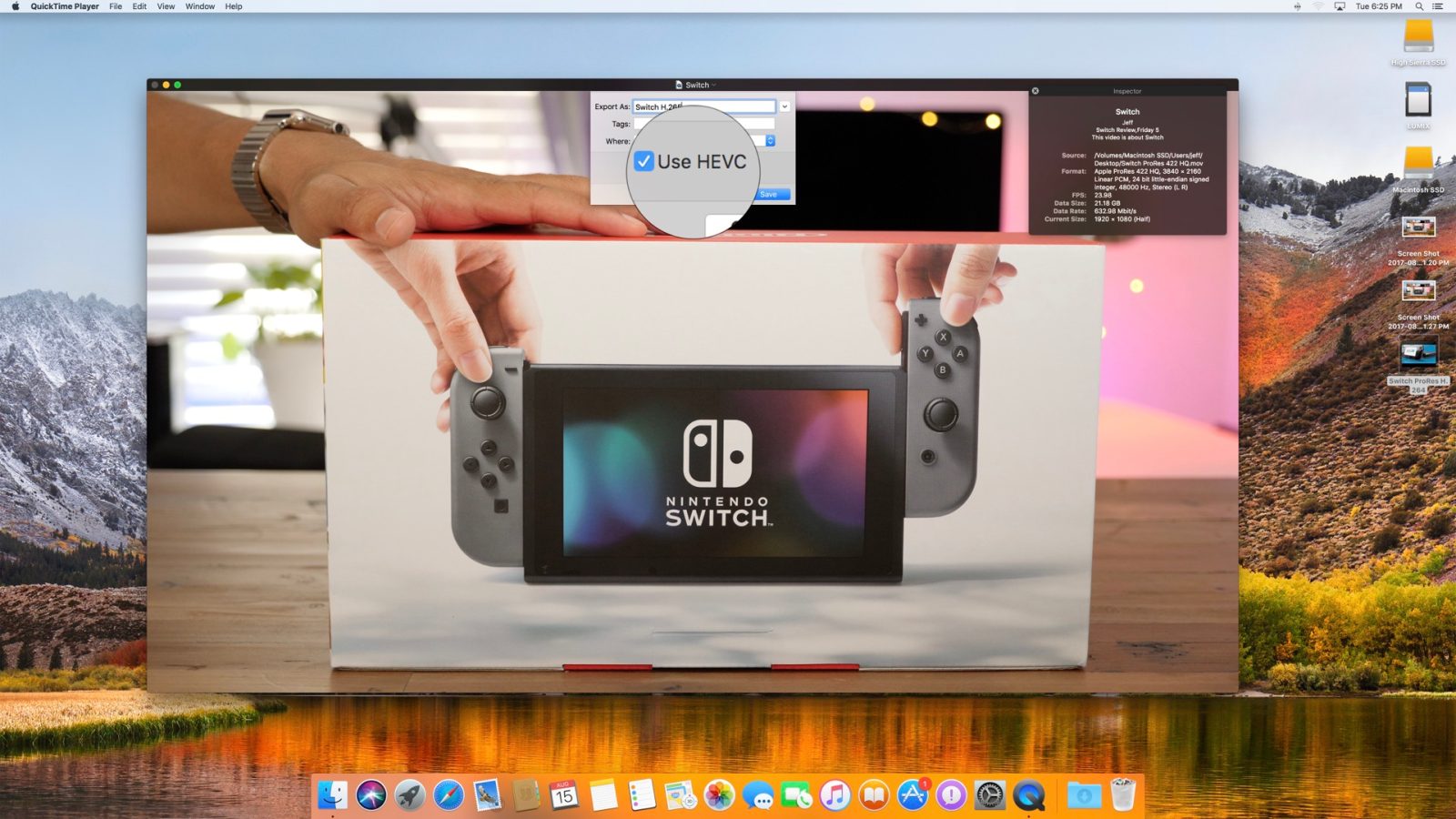
Upcoming support of the HEVC (High Efficiency Video Coding ) codec in macOS High Sierra and iOS 11 will help to improve file efficiency of high quality video files. With an added emphasis on high quality 4K content in upcoming Apple hardware and software, the deployment of such technology is occurring at an ideal time.
Already users running the beta version of macOS High Sierra are taking advantage of HEVC encoding (also known as H.265) via QuickTime and are reporting positive results. Apple notes that the significant efficiency improvements could yield an up to 50% reduction in file size, with limited end-user-discernible quality degradation.
There are a few things to keep in mind with regard to HEVC video exports at the moment. First and foremost, its implementation into macOS and iOS is new, and initial compatibility will be limited across various platforms. For instance, macOS Sierra is unable to play H.265 content out of the box, and neither do tentpole apps like Final Cut Pro X.
For those in the Apple ecosystem, much of that will change after this fall’s software release schedule comes to a head. Yet, compatibility will continue to be an issue that needs to be considered, and the patent and licensing situation that currently surrounds the codec will likely serve to stymie universal adoption.
There’s also the matter of how taxing it is to encode H.265 video when compared to H.264 encoding. As explained at Apple’s WWDC Introducing HEIF and HEVC session, H.265 features the ability to wield a more diverse set of macro blocks during encoding, allow for higher efficiency:
HEVC introduces notion of CTUs or coding tree units. And these it start down at 4 x 4 and go all the way up to 64 x 64. And it’s when you can use these larger sizes is when you realize the greater compression benefit. And this is especially true when you’re dealing with high resolution videos and images.
Fabio Sonnati explained some of these benefits in his detailed technical overview of H.265 back in 2014.
In order to compare H.264 vs H.265, I took a lossy, yet very high quality, ProRes 422 HQ clip and used QuickTime to export the video twice — once as H.264 and again as H.265.
The H.265 export was smaller in size, as expected, but it was also significantly more taxing on my Mid-2017 entry-level 5K iMac. The export of the 4 minute and 28 second video took less than 2 minutes when using H.264, whereas the H.265 export took more than 10 minutes.

File size was better with the H.265 file coming in at 587MB while the H.264 version yielded a file size of 755MB, an efficiency increase of 22%. That’s certainly nothing to laugh at, especially when considering how similar the two videos look when compared side by side.

Obviously doing a video comparison via YouTube has its limits due to so many variables being in play. These include YouTube’s compression, browser support, available bandwidth, etc. But YouTube recently gained support for H.265 uploads, so I figured I’d go ahead and upload both videos for a quick and dirty comparison.
Switch H.265 Export
Switch H.264 Export
H.265 will definitely save on storage space used by high quality 4K content when compared to H.264. Whether or not it’s worth using, at least initially, will depend on the source content, hardware used to do the HEVC encoding, and how you plan on using the content after export. For example, if you experience significant file size savings, and plan on uploading to YouTube using a limited bandwidth connection, it could be worth it once H.265 support arrives in Apple’s professional video toolsets like Final Cut Pro X and Compressor.
Check out 9to5Mac on YouTube for more Apple news:
FTC: We use income earning auto affiliate links. More.









Comments